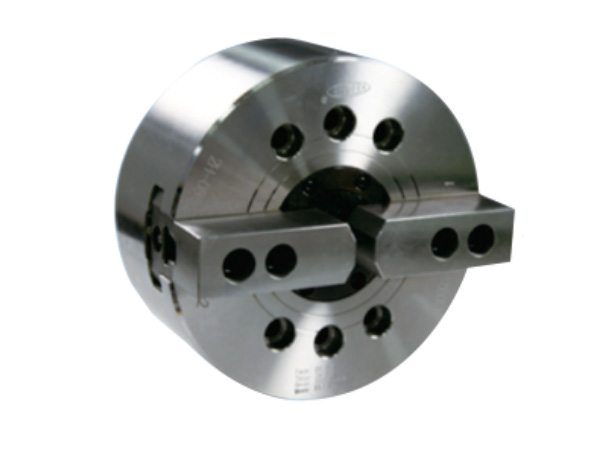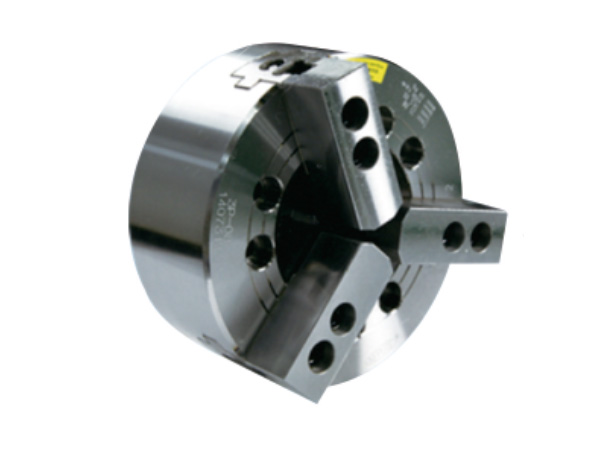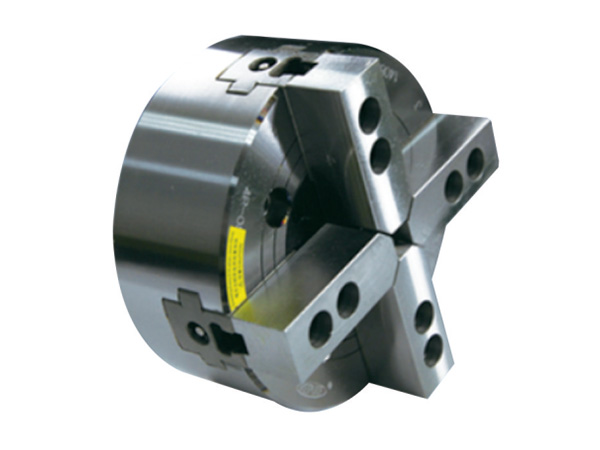News Categories
Introduction
What is a Power Chuck?
The Importance of Chucks in Machining
Overview of 2 Jaw, 3 Jaw, and 4 Jaw Chucks
Introduction to 2 Jaw Chucks
Introduction to 3 Jaw Chucks
Introduction to 4 Jaw Chucks
Differences Between 2 Jaw, 3 Jaw, and 4 Jaw Chucks
Structural Differences
Suitable Applications
Ease of Operation
Positioning Accuracy
Clamping Force and Stability
How to Choose the Right Chuck
Analyzing Application Requirements
Considering Workpiece Material
Chuck Maintenance and Longevity
Cost-Effectiveness and Economic Considerations
Case Studies: Choosing Chucks for Different Scenarios
Advantages of Lingman Machinery Products
Research and Design Capabilities
Manufacturing Equipment and Processes
After-Sales Service and Customer Support
Technical Innovation and Future Outlook
Future Trends in Chuck Technology
Lingman Machinery’s Technological Roadmap and Innovation
Conclusion
The Importance of Selecting the Right Chuck
How Lingman Machinery Supports Customer Success
2-Jaw Power Chucks: The Quintessential Technology and Applications in Contemporary Industry
A power chuck is an important clamp used to secure workpieces while turning, milling, and drilling in the machining industry. Unlike manual chucks, which require the operator to tighten the jaws using a wrench or key, power chucks utilize pneumatic, hydraulic, or electric actuation to automatically clamp the workpiece with precise and consistent force. This automation not only increases the speed and efficiency of the machining process but also enhances the repeatability and accuracy of operations, making power chucks a must-have tool in modern manufacturing.
Power chucks are available in multiple forms, generally differing based on the number of jaws—usually two, three, or four jaws. The choice of chuck involves various advantages and applicability, depending on the shape and nature of the workpiece, as well as the specific requirements of the task. Choosing the right chuck can significantly impact the quality of the final product, the efficiency of the production process, and overall operational costs.
Chucks play a fundamental role in machining by securely holding the workpiece in place during the cutting or shaping process. A well-chosen chuck ensures that the workpiece remains stable, accurately aligned, and properly clamped—essential for precision part making. Poor clamping can lead to several issues, such as workpiece slippage, deformation, or even damage to the machine tool, resulting in costly downtime, increased scrap rates, and reduced product quality.
The choice of chuck directly influences several critical aspects of the machining process, including:
Accuracy: Achieving close tolerances requires accurate positioning and orientation of the workpiece.
Speed: Power chucks enable rapid clamping and unclamping, reducing setup times and increasing productivity.
Safety: Properly clamped workpieces minimize the risk of accidents, ensuring operator safety.
Versatility: Different chucks can accommodate a wide range of workpiece shapes and sizes, enhancing machining flexibility.
Given these factors, selecting the right chuck is a strategic decision that can affect the entire production process. This document will explore the characteristics and differences of 2-jaw, 3-jaw, and 4-jaw chucks, providing insights into how to select the most suitable option for various machining scenarios. Additionally, it will highlight the strengths of Lingman Machinery products and how they can support your manufacturing needs through innovative design, superior quality, and exceptional customer service.
Introduction to 2 Jaw Chucks

2-jaw chucks are specialized chucks with two jaws typically positioned opposite each other. These chucks are particularly well-suited for clamping irregularly shaped workpieces, such as rectangular, square, or asymmetrical components, where traditional 3-jaw or 4-jaw chucks might struggle to maintain a secure hold.
The key characteristics of 2-jaw chucks include:
Adaptability to Irregular Shapes: The two jaws can be adjusted independently, allowing for a secure grip on workpieces with non-circular profiles.
Precision in Asymmetric Clamping: While they are not typically used for high-precision round parts, 2-jaw chucks offer excellent clamping force and stability for asymmetric components.
Ease of Use: Setup and alignment can be quicker compared to chucks with more jaws, especially when working with irregular shapes.
Common applications of 2-jaw chucks include:
Pipe and Tube Clamping: Particularly in industries like plumbing, where components often have non-circular cross-sections.
Irregular Parts Machining: Ideal for custom manufacturing, where workpieces have unique or complex shapes.
Heavy-Duty Applications: Suitable for holding large or heavy parts securely.
Introduction to 3 Jaw Chucks

3-jaw chucks are the most commonly used chucks in machining, especially in turning operations. These chucks have three jaws that move simultaneously when adjusted, typically used to hold cylindrical or hexagonal workpieces. The uniform distribution of clamping force around the workpiece ensures a high degree of accuracy and repeatability.
The key characteristics of 3-jaw chucks include:
Self-Centering Mechanism: The jaws move simultaneously and automatically center the workpiece, making them ideal for holding round or hexagonal parts with precision.
Versatility: Suitable for a wide variety of materials and applications, from basic turning operations to more complex machining tasks.
Ease of Operation: Self-centering capability reduces setup time and effort, increasing overall productivity.
Common applications of 3-jaw chucks include:
General Turning: Ideal for machining cylindrical components, such as shafts, bolts, and other round parts.
Repetitive Work: Perfect for high-volume production, ensuring consistent accuracy and alignment.
Hexagonal Workpieces: Useful in various automotive and industrial applications.
Introduction to 4 Jaw Chucks

4-jaw chucks feature four independent jaws, each of which can be adjusted separately. This independence allows for greater flexibility in holding workpieces with non-standard shapes or for applications that require precise centering.
The key characteristics of 4-jaw chucks include:
Independent Jaw Movement: Each jaw can be adjusted independently, allowing for precise clamping of irregularly shaped or off-center workpieces.
High Precision: Particularly useful for operations that demand exacting tolerances.
Versatility: Suitable for holding both round and non-round workpieces, offering unmatched versatility.
Common applications of 4-jaw chucks include:
Square or Rectangular Stock Machining: Common in woodworking and metalworking industries.
Eccentric Turning: Useful for creating off-center features on a workpiece.
Heavy-Duty Machining: Ideal for secure and stable clamping of large or heavy workpieces.
Structural Differences
2-Jaw Chucks: With only two jaws positioned opposite each other, these chucks are perfect for gripping irregular workpieces.
3-Jaw Chucks: These have three jaws forming a triangle, making them ideal for self-centering round or hexagonal workpieces.
4-Jaw Chucks: Featuring four independently adjustable jaws, these chucks offer superior clamping stability and versatility.
Suitable Applications
2-Jaw Chucks: Best suited for clamping irregular shapes like pipes, tubes, or non-round components.
3-Jaw Chucks: Ideal for machining cylindrical, hexagonal, or round parts, especially in high-volume production.
4-Jaw Chucks: Perfect for machining square or rectangular stock, eccentric turning, and heavy-duty applications.
Ease of Operation
2-Jaw Chucks: Easier to set up for irregular shapes, but lack self-centering capabilities.
3-Jaw Chucks: Self-centering mechanism makes setup quicker and easier for round parts.
4-Jaw Chucks: More complex to set up due to independent jaw adjustments but offer unmatched versatility.
Positioning Accuracy
2-Jaw Chucks: Less accurate for positioning compared to 3- or 4-jaw chucks.
3-Jaw Chucks: High positioning accuracy, especially for round and hexagonal parts.
4-Jaw Chucks: Offers the highest positioning accuracy due to independent jaw adjustments.
Clamping Force and Stability
2-Jaw Chucks: Concentrated clamping force on two points, less stable for round parts.
3-Jaw Chucks: Good balance between clamping force and stability, ideal for a wide range of applications.
4-Jaw Chucks: Superior clamping force and stability, especially for large or heavy workpieces.
Choosing the right chuck for your machining operations is crucial for ensuring optimal performance, efficiency, and quality. The selection depends on various factors, including the nature of the workpiece, the type of machining operation, and the specific requirements of your application.
Analyzing Application Requirements
Type of Machining Operation: Different operations, such as turning, milling, or drilling, may require different types of chucks.
Precision Needs: For high-precision applications, a 4-jaw chuck might be the best choice.
Shape and Size of Workpiece: Whether the workpiece is round, hexagonal, square, or irregularly shaped.
Production Volume: For high-volume production, a 3-jaw chuck's self-centering feature can save significant setup time.
Considering Workpiece Material
Metallic Materials: For hard metals like steel or titanium, a 4-jaw chuck may be necessary.
Soft Materials: Softer materials like aluminum or plastic may require less clamping force, making a 2-jaw chuck a suitable choice.
Brittle Materials: For materials like ceramics or glass, a 4-jaw chuck provides even clamping pressure, reducing the risk of damage.
Chuck Maintenance and Longevity
Durability: Consider the material and build quality of the chuck.
Ease of Maintenance: Some chucks are easier to maintain than others.
Replacement Parts Availability: Ensure that replacement parts are readily available.
Cost-Effectiveness and Economic Considerations
Initial Investment: Consider the initial purchase price of the chuck.
Operational Efficiency: A more expensive chuck that reduces setup time or increases machining accuracy can lead to cost savings over time.
Maintenance Costs: Consider the cost of maintaining the chuck over its lifetime.
Research and Design Capabilities
Innovative Designs: Our R&D team focuses on developing chucks that offer enhanced performance, durability, and ease of use.
Customization Options: We offer customized chuck designs tailored to specific customer needs.
Prototyping and Testing: Every product undergoes rigorous testing to ensure it meets the highest standards of precision and reliability.
Manufacturing Equipment and Processes
Advanced CNC Machining: Our manufacturing facility is equipped with the latest CNC machines, ensuring consistent quality.
High-Quality Materials: We use high-grade steel and alloys to manufacture our chucks, enhancing durability and performance.
Quality Control: Every chuck undergoes multiple quality control checks throughout the manufacturing process.
Sustainable Practices: We are committed to sustainable manufacturing practices that minimize waste and reduce environmental impact.
After-Sales Service and Customer Support
Technical Support: Our team is available to provide technical assistance for any issues that may arise during the use of our chucks.
Maintenance and Repair Services: We offer maintenance and repair services to keep your chucks in optimal condition.
Spare Parts Availability: We maintain a comprehensive inventory of spare parts for all our products.
Customer Training: We offer training programs to help your team get the most out of our chucks.
Product Range and Versatility
Pneumatic Chucks: Ideal for high-speed operations.
Hydraulic Chucks: Designed for heavy-duty machining tasks.
Electric Chucks: Reliable clamping solutions that are easy to integrate into automated systems.
Custom Chucks: We offer custom-designed chucks tailored to specific applications.
Future Trends in Chuck Technology
Automation and Smart Chucks: Smart chucks equipped with sensors and data analytics capabilities are becoming increasingly popular.
Advanced Materials: The use of high-strength alloys, composites, and ceramics is expected to transform the industry.
Precision and Micro-Machining: The demand for chucks that can handle micro-machining operations is growing.
Environmental Sustainability: There is a growing emphasis on developing chucks that minimize energy consumption and reduce waste.
Customization and Modular Design: The trend toward greater customization in manufacturing is driving the development of modular chuck systems.
Lingman Machinery’s Technological Roadmap and Innovation
Investment in R&D: We have significantly increased our investment in research and development.
Collaborative Innovation: We partner with leading research institutions, universities, and industry experts.
Customer-Centric Development: Our product development process is driven by the needs of our customers.
Agility and Flexibility: We have adopted an agile approach to product development.
Sustainability Initiatives: We are committed to reducing our environmental footprint.
Choosing the right chuck is more than just a technical decision—it’s a strategic one that can influence the success of your entire manufacturing operation. With Lingman Machinery as your partner, you gain access to a wealth of expertise, innovative products, and dedicated support that empowers you to achieve your goals.